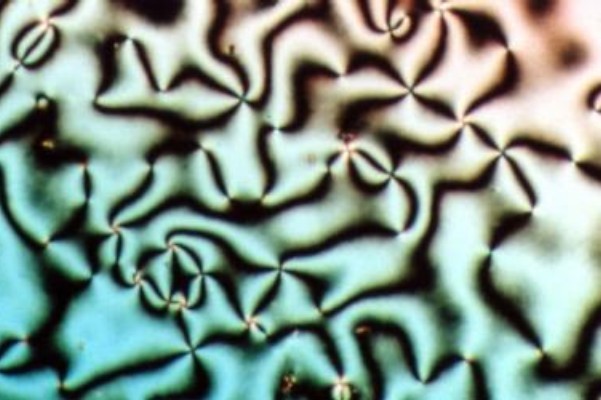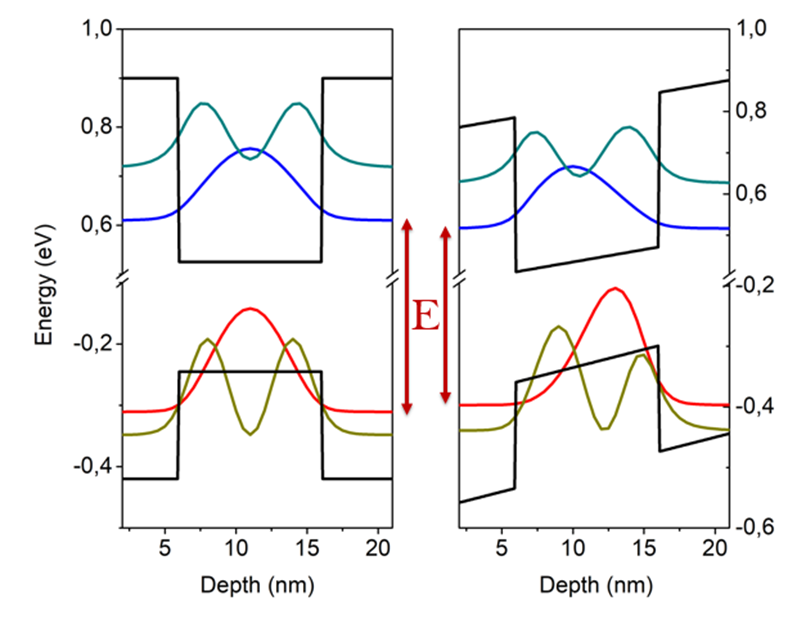|
Optical Modulator
An optical modulator is a device which is used to modulate a beam of light. The beam may be carried over free space, or propagated through an optical waveguide (optical fibre). Depending on the parameter of a light beam which is manipulated, modulators may be categorized into amplitude modulators, phase modulators, polarization modulators etc. Often the easiest way to obtain modulation of intensity of a light beam, is to modulate the current driving the light source, e.g. a laser diode. This sort of modulation is called ''direct modulation'', as opposed to the external modulation performed by a light modulator. For this reason light modulators are, e.g. in fiber optic communications, called ''external light modulators''. With laser diodes where narrow linewidth is required, direct modulation is avoided due to a high bandwidth "chirping" effect when applying and removing the current to the laser. Optical modulators are used with superconductors which work properly only at low temp ... [...More Info...] [...Related Items...] OR: [Wikipedia] [Google] [Baidu] |
Modulation
In electronics and telecommunications, modulation is the process of varying one or more properties of a periodic waveform, called the '' carrier signal'', with a separate signal called the ''modulation signal'' that typically contains information to be transmitted. For example, the modulation signal might be an audio signal representing sound from a microphone, a video signal representing moving images from a video camera, or a digital signal representing a sequence of binary digits, a bitstream from a computer. The carrier is higher in frequency than the modulation signal. In radio communication the modulated carrier is transmitted through space as a radio wave to a radio receiver. Another purpose is to transmit multiple channels of information through a single communication medium, using frequency-division multiplexing (FDM). For example in cable television which uses FDM, many carrier signals, each modulated with a different television channel, are transported throug ... [...More Info...] [...Related Items...] OR: [Wikipedia] [Google] [Baidu] |
Franz–Keldysh Effect
The Franz–Keldysh effect is a change in optical absorption by a semiconductor when an electric field is applied. The effect is named after the German physicist Walter Franz and Russian physicist Leonid Keldysh. Karl W. Böer observed first the shift of the optical absorption edge with electric fields during the discovery of high-field domains and named this the Franz-effect. A few months later, when the English translation of the Keldysh paper became available, he corrected this to the Franz–Keldysh effect. As originally conceived, the Franz–Keldysh effect is the result of wavefunctions "leaking" into the band gap. When an electric field is applied, the electron and hole wavefunctions become Airy functions rather than plane waves. The Airy function includes a "tail" which extends into the classically forbidden band gap. According to Fermi's golden rule, the more overlap there is between the wavefunctions of a free electron and a hole, the stronger the optical absorption ... [...More Info...] [...Related Items...] OR: [Wikipedia] [Google] [Baidu] |
Electro-optic Modulator
An electro-optic modulator (EOM) is an optical device in which a signal-controlled element exhibiting an electro-optic effect is used to modulate a beam of light. The modulation may be imposed on the phase, frequency, amplitude, or polarization of the beam. Modulation bandwidths extending into the gigahertz range are possible with the use of laser-controlled modulators. The electro-optic effect is the change in the refractive index of a material resulting from the application of a DC or low-frequency electric field. This is caused by forces that distort the position, orientation, or shape of the molecules constituting the material. Generally, a nonlinear optical material ( organic polymers have the fastest response rates, and thus are best for this application) with an incident static or low frequency optical field will see a modulation of its refractive index. The simplest kind of EOM consists of a crystal, such as lithium niobate (LiNbO3), whose refractive index is a function ... [...More Info...] [...Related Items...] OR: [Wikipedia] [Google] [Baidu] |
Electro-absorption Modulator
An electro-absorption modulator (EAM) is a semiconductor device which can be used for modulating the intensity of a laser beam via an electric voltage. Its principle of operation is based on the Franz–Keldysh effect, i.e., a change in the absorption spectrum caused by an applied electric field, which changes the bandgap energy (thus the photon energy of an absorption edge) but usually does not involve the excitation of carriers by the electric field. For modulators in telecommunications, small size and modulation voltages are desired. The EAM is candidate for use in external modulation links in telecommunications. These modulators can be realized using either bulk semiconductor materials or materials with multiple quantum dots or wells. Most EAMs are made in the form of a waveguide with electrodes for applying an electric field in a direction perpendicular to the modulated light beam. For achieving a high extinction ratio, one usually exploits the Quantum-confined Stark effect ( ... [...More Info...] [...Related Items...] OR: [Wikipedia] [Google] [Baidu] |
Acousto-optic Modulators
An acousto-optic modulator (AOM), also called a Bragg cell or an acousto-optic deflector (AOD), uses the acousto-optic effect to diffract and shift the frequency of light using sound waves (usually at radio-frequency). They are used in lasers for Q-switching, telecommunications for signal modulation, and in spectroscopy for frequency control. A piezoelectric transducer is attached to a material such as glass. An oscillating electric signal drives the transducer to vibrate, which creates sound waves in the material. These can be thought of as moving periodic planes of expansion and compression that change the index of refraction. Incoming light scatters (see Brillouin scattering) off the resulting periodic index modulation and interference occurs similar to Bragg diffraction. The interaction can be thought of as a three-wave mixing process resulting in Sum-frequency generation or Difference-frequency generation between phonons and photons. Principles of operation A typical ... [...More Info...] [...Related Items...] OR: [Wikipedia] [Google] [Baidu] |
Liquid Crystal
Liquid crystal (LC) is a state of matter whose properties are between those of conventional liquids and those of solid crystals. For example, a liquid crystal may flow like a liquid, but its molecules may be oriented in a crystal-like way. There are many types of LC phases, which can be distinguished by their optical properties (such as textures). The contrasting textures arise due to molecules within one area of material ("domain") being oriented in the same direction but different areas having different orientations. LC materials may not always be in a LC state of matter (just as water may be ice or water vapor). Liquid crystals can be divided into 3 main types: * thermotropic, *lyotropic, and * metallotropic. Thermotropic and lyotropic liquid crystals consist mostly of organic molecules, although a few minerals are also known. Thermotropic LCs exhibit a phase transition into the LC phase as temperature changes. Lyotropic LCs exhibit phase transitions as a function of both ... [...More Info...] [...Related Items...] OR: [Wikipedia] [Google] [Baidu] |
Magneto-optic Effect
A magneto-optic effect is any one of a number of phenomena in which an electromagnetic wave propagates through a medium that has been altered by the presence of a quasistatic magnetic field. In such a medium, which is also called gyrotropic or gyromagnetic, left- and right-rotating elliptical polarizations can propagate at different speeds, leading to a number of important phenomena. When light is transmitted through a layer of magneto-optic material, the result is called the Faraday effect: the plane of polarization can be rotated, forming a Faraday rotator. The results of reflection from a magneto-optic material are known as the magneto-optic Kerr effect (not to be confused with the nonlinear Kerr effect). In general, magneto-optic effects break time reversal symmetry locally (i.e. when only the propagation of light, and not the source of the magnetic field, is considered) as well as Lorentz reciprocity, which is a necessary condition to construct devices such as optical i ... [...More Info...] [...Related Items...] OR: [Wikipedia] [Google] [Baidu] |
Acousto-optic Effect
Acousto-optics is a branch of physics that studies the interactions between sound waves and light waves, especially the diffraction of laser light by ultrasound (or sound in general) through an ultrasonic grating. Introduction Optics has had a very long and full history, from ancient Greece, through the renaissance and modern times. As with optics, acoustics has a history of similar duration, again starting with the ancient Greeks. In contrast, the acousto-optic effect has had a relatively short history, beginning with Brillouin predicting the diffraction of light by an acoustic wave, being propagated in a medium of interaction, in 1922. This was then confirmed with experimentation in 1932 by Debye and Sears, and also by Lucas and Biquard. The particular case of diffraction on the first order, under a certain angle of incidence, (also predicted by Brillouin), has been observed by Rytow in 1935. Raman and Nath (1937) have designed a general ideal model of interaction ... [...More Info...] [...Related Items...] OR: [Wikipedia] [Google] [Baidu] |
Electro-optic Effect
Electro–optics is a branch of electrical engineering, electronic engineering, materials science, and material physics involving components, electronic devices such as lasers, laser diodes, LEDs, waveguides, etc. which operate by the propagation and interaction of light with various tailored materials. It is closely related to the branch of optics, involving application of generation of photons, called photonics. It is not only concerned with the " electro–optic effect", since it deals with the interaction between the electromagnetic (optical) and the electrical ( electronic) states of materials. Electro-optical devices The electro-optic effect is a change in the optical properties of an optically active material due to interaction with light. This interaction usually results in a change in the birefringence, and not simply the refractive index of the medium. In a Kerr cell, the change in birefringence is proportional to the square of the optical electric field, and t ... [...More Info...] [...Related Items...] OR: [Wikipedia] [Google] [Baidu] |
Quantum-confined Stark Effect
The quantum-confined Stark effect (QCSE) describes the effect of an external electric field upon the light absorption spectrum or emission spectrum of a quantum well (QW). In the absence of an external electric field, electrons and holes within the quantum well may only occupy states within a discrete set of energy subbands. Only a discrete set of frequencies of light may be absorbed or emitted by the system. When an external electric field is applied, the electron states shift to lower energies, while the hole states shift to higher energies. This reduces the permitted light absorption or emission frequencies. Additionally, the external electric field shifts electrons and holes to opposite sides of the well, decreasing the overlap integral, which in turn reduces the recombination efficiency (i.e. fluorescence quantum yield) of the system. The spatial separation between the electrons and holes is limited by the presence of the potential barriers around the quantum well, meani ... [...More Info...] [...Related Items...] OR: [Wikipedia] [Google] [Baidu] |
Refractive Index
In optics, the refractive index (or refraction index) of an optical medium is a dimensionless number that gives the indication of the light bending ability of that medium. The refractive index determines how much the path of light is bent, or refracted, when entering a material. This is described by Snell's law of refraction, , where ''θ''1 and ''θ''2 are the angle of incidence and angle of refraction, respectively, of a ray crossing the interface between two media with refractive indices ''n''1 and ''n''2. The refractive indices also determine the amount of light that is reflected when reaching the interface, as well as the critical angle for total internal reflection, their intensity (Fresnel's equations) and Brewster's angle. The refractive index can be seen as the factor by which the speed and the wavelength of the radiation are reduced with respect to their vacuum values: the speed of light in a medium is , and similarly the wavelength in that medium is , where ''� ... [...More Info...] [...Related Items...] OR: [Wikipedia] [Google] [Baidu] |
Light Beam
A light beam or beam of light is a directional projection of light energy radiating from a light source. Sunlight forms a light beam (a sunbeam) when filtered through media such as clouds, foliage, or windows. To artificially produce a light beam, a lamp and a parabolic reflector is used in many lighting devices such as spotlights, car headlights, PAR Cans, and LED housings. Light from certain types of laser has the smallest possible beam divergence. Visible light beams From the side, a beam of light is only visible if part of the light is scattered by objects: tiny particles like dust, water droplets (mist, fog, rain), hail, snow, or smoke, or larger objects such as birds. If there are many objects in the light path, then it appears as a continuous beam, but if there are only a few objects, then the light is visible as a few individual bright points. In any case, this scattering of light from a beam, and the resultant visibility of a light beam from the side, is kn ... [...More Info...] [...Related Items...] OR: [Wikipedia] [Google] [Baidu] |




